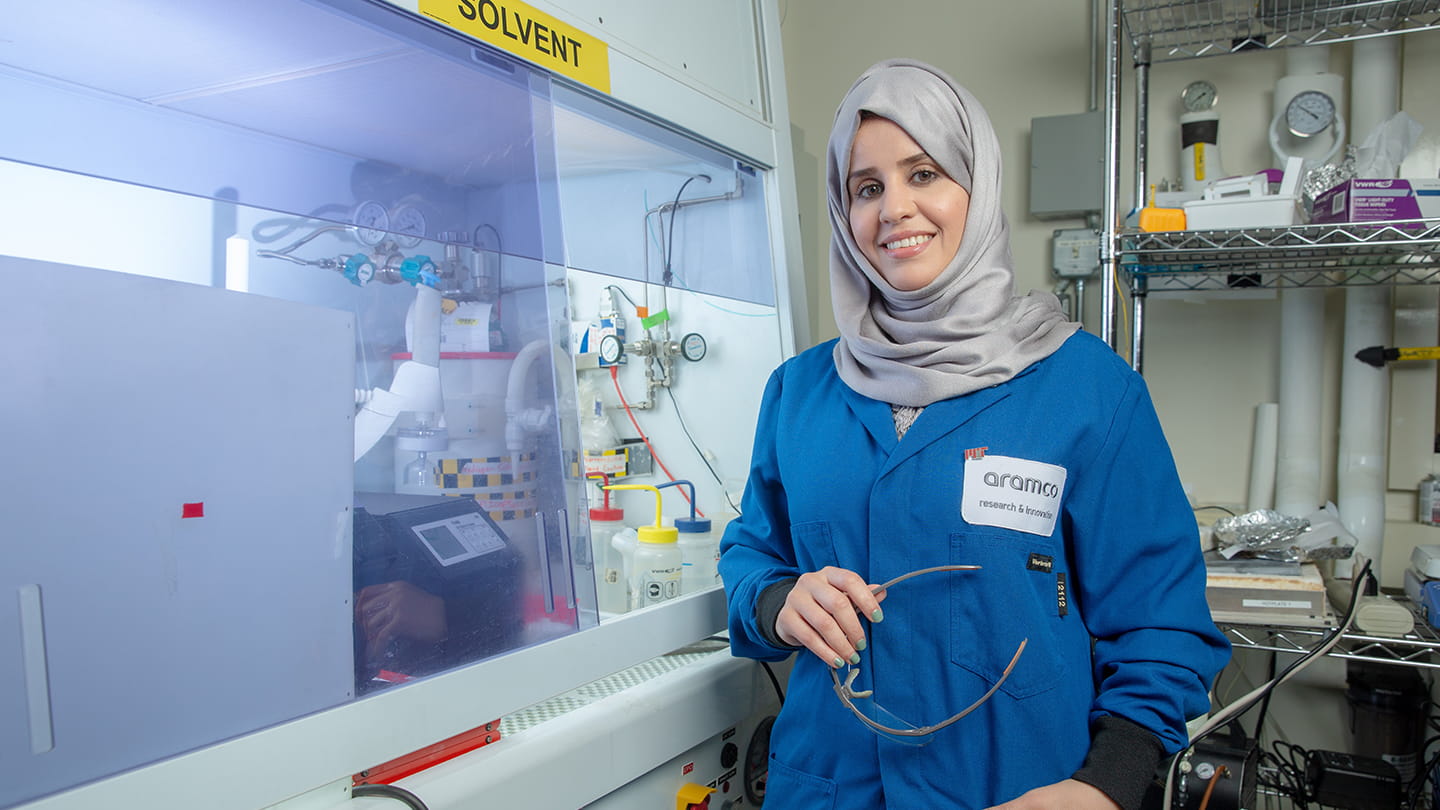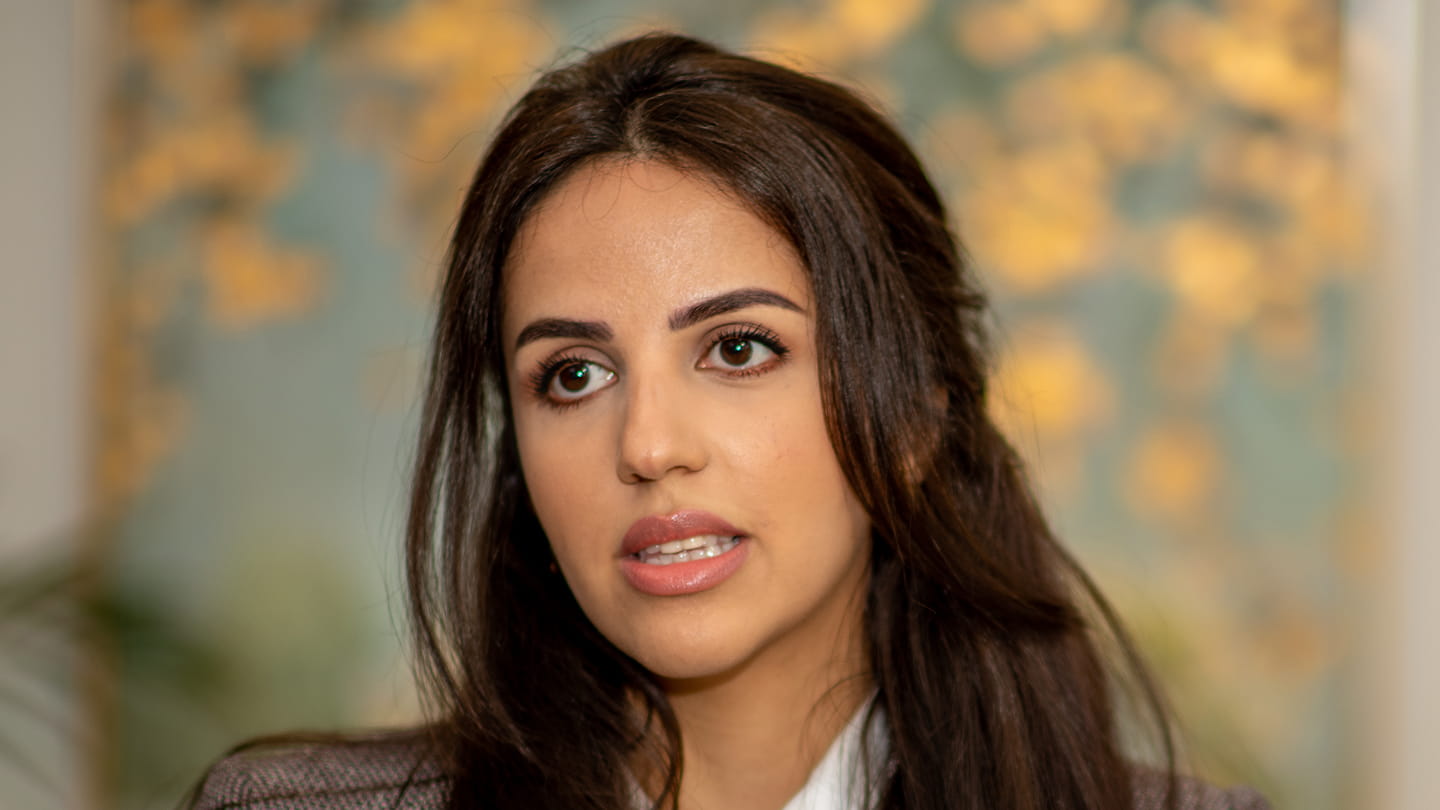Inspiring, driven, determined: Aramco women share their stories
A diverse workforce transforms potential into opportunity.

- By being more diverse we achieve more with our resources and unlock new opportunities
- We are empowering our workforce through inclusive practices, and creating opportunities for women to lead at all levels
- Meet some of the inspirational women behind Aramco’s success
According to the World Petroleum Council, only around 20 per cent of the global oil and gas workforce is female. Progress has been made in recent years toward enhancing diversity, but there remains a perception that the industry is the domain of men. However, Aramco believes that there is a bright future ahead for women in the energy industry — and we are committed to making the Company the best place to work for diverse talent of any gender.
We understand the impact women have both within Aramco, as well as in the industry, and have cultivated a thriving ecosystem for female empowerment that includes a range of leadership and mentoring programs to develop skills and fast-track advancement.
Our women now make up the petroleum engineers working in the field, the scientists in our R&D centers conducting future-altering research, the energy traders selling our products to customers around the world, and inventors developing revolutionary new processes and products — at last count, women working at Aramco have filed more than 170 patents in recent years.
Meet six Aramco employees who inspire with their stories.

Innovation in the field of plastics
Dr. Haleema Alamri is impressive. Not only because she is a senior lab scientist in the Materials Design Lab at Aramco’s Research & Development Center (R&DC). Nor because she has a PhD in chemistry, is the mother of two children, holds a position as an MIT research affiliate, is taking Chinese classes, and chairs a female Saudi social innovation group.
Even more impressive is her pursuit of a noble quest: she and her team at the R&DC are committed to formulating plastics that degrade organically, so that when these materials are used in future applications they will not become planet-impacting litter. Applying her background in chemistry and macromolecular engineering has enabled Dr. Haleema to create a distinctive, innovative category of polymeric materials, and to develop new techniques for molding polymeric materials in ways that will control their decomposition.
For Dr. Haleema, this is her calling; one that can transform society and hold the promise of a better future for her children. “We grow up thinking that our choices are limited and that there are some areas in which we can never excel. I would love to be part of any effort that can change that perception.” She is already on her way to doing just that and her success will have enormous impact — not only for the environment, but society as a whole.

Keeping Aramco connected to the world
In the fast-paced world of digital content, what can an international company do to reach, and impact, their audiences? At Aramco, the person charged with answering that daunting question is Sara Tamimi, director of digital communications. “There’s never a finish line,” she laughs, “but our work is always exciting and I’m proud of our team’s ability to reach people across the Kingdom and around the globe.” And under Sara’s leadership, this reach now extends to more than 708 million people.
The digital environment may be in a constant state of change, but the drive for achievement is nothing new to this dynamic young leader, who began her career in IT and then completed her MBA at the Hong Kong University of Science and Technology through Aramco’s advanced degree program. “What makes Aramco a great company is that it provides a culture of learning and curiosity — the opportunity to learn and to become a great contributor.”
The fruits of Sara and her team’s efforts are recognized in the multiple awards that Aramco’s digital communication channels have achieved, such as the two Gold awards recently awarded by the MENA Digital Awards (MDA), for Best Web Platform and Best Use of Digital in the Oil and Gas Sector. But these successes are not an accident, Sara notes; “we’re using behavioral science and data-driven insights, as well as the strengths of social media and the online world, to bring the company’s human side to life.

Moving forward in the world of science
Natural phenomena, especially with the smallest organisms, have always been a source of amazement for Dr. Elaf Ahmed. She immersed herself in science activities all the way through high school and beyond, with a doctorate in environmental science and engineering. Her work focuses on bio-electrochemical synthesis of various nanomaterials for environmental applications, such as photo catalysis and dye degradation.
Dr. Ahmed joined Aramco as a lab scientist on the Produced Water Treatment Team, part of the Oil and Gas Treatment Division at the R&DC. She is one of the project leaders on a team of around 10 scientists who work on research projects for different produced water treatment technologies. “Oil and gas reservoirs often have water, as well as hydrocarbons. It’s very important to find suitable technologies to treat this water for potential applications,” Dr. Ahmed explains.
Meanwhile, she is optimistic about the future for Saudi women in science, technology, engineering and math, known as STEM, saying, “it’s great to see and experience the changes that are empowering Saudi women — now you can see women participating, having more critical roles and a positive influence on society.” Dr. Ahmed has published her work in peer reviewed scientific journals, filed patents, and presented her work at a number of international conferences. She is moving forward in the world of science, leading and guiding others in the process.

The future will include solar power in the energy mix
The first time Esra M. Alhabshi did lab work at school a lightbulb came on — both figuratively and literally. “It was a simple task. I had to connect the components and the wiring to make the lightbulb turn on, and it did.” Esra says. “At that moment I knew I wanted to do something that made me feel like there is a concrete objective and I can see, visually, the results of my efforts.”
Now, Esra, who holds a bachelor’s degree in electrical engineering, nanotechnology and microsystems, has more challenging goals. Esra works at the R&DC as a member of the Sustainable Energy Team, in collaboration with KAUST. She researches the use of nonmetallics to improve the efficiency of solar cells, and sees a future of cleaner energy from many different areas — not just solar power, but from hydrogen and carbon capture and storage technologies. “Fifty years from now, the production of new materials, layered with silicon, could dramatically increase the possibility that we take much more energy from the sun. Materials like perovskite, which are light and flexible, have a lot of potential for use in solar cells,” she says.
Research conducted by Esra and her team has been featured in several publications and presented at a number of prestigious conferences. Her accomplishments are shining a light on the capabilities of women in STEM.

The chemistry of success
Hawraa Bin Saad has dreams that would probably confuse most. She dreams of complicated equations. All night, in her dreams, she faces these equations and says she forces herself to wake up because she is impatient to get back to them in the real world. Back at the lab in the morning, she continues her work.
Hawraa is currently a research scientist at the R&DC Nonmetallic Applications Development Division, with a focus on diversifying the oil economy by identifying disruptive research opportunities for applications, not only within the oil and gas industry, but beyond. She organized a nonmetallic workshop to identify the challenges and the limitations hindering nonmetallic pipes. The workshop outcomes were analyzed and prioritized to build a technology roadmap that addresses the major technical challenges of nonmetallics available on the market. This technology roadmap is now part of the research portfolio of the new Nonmetallic Innovation Center in Cambridge, U.K.
When Hawraa talks about organic chemistry, it is clear this is her first true love. She discusses the mechanisms and the synthesis of materials, and how they look alive in front of her, as if they are in some kind of battle and she enjoys the quest, explaining, “I will always lean towards science and I’m glad I’m doing it. It has its own magic.”

Part of historical progress
Abeer Aljabr didn’t set out to be part of an historic event. But she and her colleague, Jazyah Al-Dossary, became Saudi Arabia’s first women to receive NFPA certification in firefighting. Abeer joined Aramco to work as an engineer in the Company’s Fire Protection Department, undergoing rigorous physical training, and passing medical and skill tests. She learnt fire suppression techniques, fire and smoke behavior, vehicle extrication, rescue techniques, and more. Being able to train and work with frontline firefighters let her tap into their experience and knowledge.
As Abeer explains, “people tend to think of firefighters in terms of putting out a blaze — and it’s true that the work requires a combination of physical ability, technique, and situational awareness. But there’s actually a deep core of science, technology, engineering, and math required to the job. To understand how fires behave, it is necessary to understand the science of it.” Abeer says she uses physics every day — even extinguishing a fire is a matter of interrupting a chemical chain reaction.
“I feel proud to be a part of the Kingdom’s historic progress and to receive NFPA firefighting certification. Once a development like this is set in motion, there will be growth in the number of women joining previously ‘male dominated’ professions. Diversity is important to bring the full complement of differing skill sets, talent, and perspectives to the table.”



